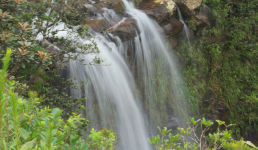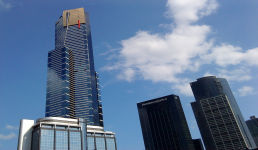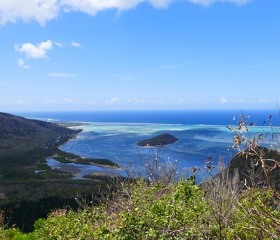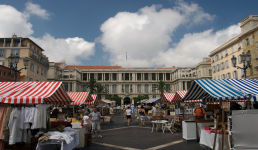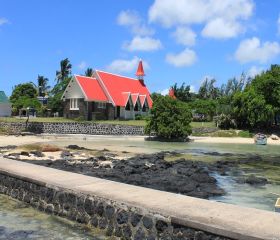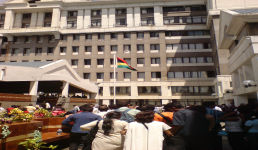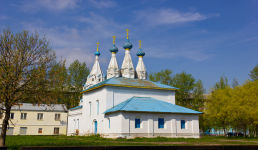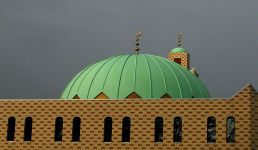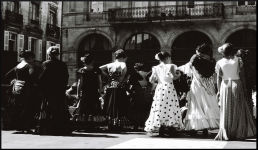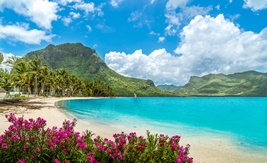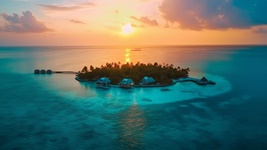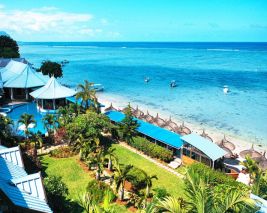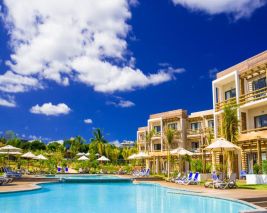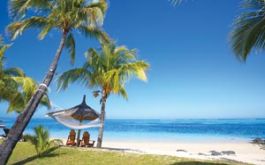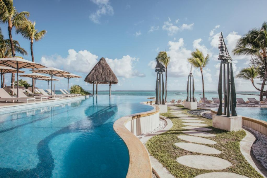They say that Mauritius was fashioned out of the handbook of the Gods. For the most part, it’s true. Sparkling cerulean waters, sugar icing shores, soft sage palms and jagged indigo mountains frame the land with ethereal wonder. Beauty imbues every inch of nature’s island rhapsody. Is it any wonder that people travel far and wide to share in this magic? And it doesn’t hurt that the nation is home to some of the best water sports and cuisine in the world! Mauritius tourism is an alluring blend of heritage, culture and nature, with a drizzling of tradition on top.
|
Mauritius Tourism-A Quick Overview
|
|
Continent
|
Africa
|
|
National Language
|
English and French
|
|
Dial Code
|
+230
|
|
Population
|
1,265,577 (as of 2019)
|
|
Currency
|
Mauritian Rupee
|
|
Time Zone
|
UTC +4 (MUT)
|
|
Area
|
2,040 square km
|
Highlights of Mauritius
Museums in Mauritius
National History Museum is a honey pot of rare and fascinating artifacts that whisper stories of the bygone ages. Harboured in a French colonial mansion, that once belonged to the Robillard family, this quaint structure is as interesting as the objects it safeguards. Here, you will discover gold coins from the Ottoman Empire, silver rupees from Aurangzeb’s rule, elegant porcelains from Emperor Wan Li’s reign and prized possessions from Napoleon Bonaparte’s personal collection such as the Bell of Marengo.
Port Louis’ charming Blue Penny Museum provides rare insight into the island’s explorations and settlements. The iconic Mauritian one-penny and two-pence stamps, from the year 1847, can be found here. In-fact, the red one-penny and blue two-pence 'Post Office' stamps are considered to be the nation’s most beloved memorabilia! To preserve the colour of said stamps, they’re lit up for only 10 minutes every hour.
Heritage Buildings of Mauritius
An idyllic grey and white manor, set against the backdrop of post-card mountains and sky; Eureka will remind you of the tale of Heidi. A delightful Creole mansion, that once sheltered its residence from the wrath of the sun, is now a charming look-book into the past, boasting period furniture, ancient maps and little stone cottages at the back.
St Aubin is everything you’d expect an 18th century plantation home to be – antique, elegant and inviting. Although the estate no longer produces sugar, it houses a cosy rum distillery and an adorable nursery that grows vanilla and anthurium flowers. You can learn about the art of vanilla, after which a meal at table d'hôte comes highly recommended!
Parks & Reserves in Mauritius
SSR Botanical Gardens is a type of place that one couldn’t even dream up, for it epitomises the very meaning of enchantment. An oasis of emerald palms give shade to an exquisite pond, in the centre of the garden, that is filled with Victoria amazonica water lilies. These lilies are shaped like tea trays, opening and closing with dual shades of white and red. This dream-like pasture is what makes tourism in Mauritius so special!
The Garden of Eden comes to life at François Leguat Reserve. This glorious expanse of lime green and teal gives shelter to hundreds of tortoises and 100,000 indigenous species of trees. One can survey the stunning grounds, navigate the mystical caves as well as traverse the museum and learn about the extinct Rodrigues solitaire.
Markets at Mauritius
Monday Market is your golden ticket to some lip-smacking local food! Head over to the steaming food stalls that prepare delicious delicacies such as gâteaux piments (chilli cakes), dhal puri (lentil pancakes) and samousas (samosas)! Once you’ve treated your belly, you can explore the many silk and textile shops. For some lovely regional produce, visit Saturday Market. It offers some of the freshest, most succulent and flavourful meats.
The Flacq Market is like the inside of a rainbow, dizzyingly colourful and striking. From its tropical fruits and tender sweets to its French and Creole apparel, there’s so much to discover if you’re up for a little walk.
Interesting facts about Mauritius
- Mauritius was named after Prince Maurits Van Nassau in the 17th century.
- 8 million years ago, this volcanic island rose above sea level.
- Mauritius is the only known habitat of the exotic Dodo bird.
- Author, Lewis Carrol, drew inspiration from a stuffed dodo when writing Alice in Wonderland.
- Mauritius is the only country in Africa to have a Hindu majority.
- Port Louis is one of the most ancient cities in the country.
Location of Mauritius
The Republic of Mauritius is a tranquil and picturesque island nation, nestled in the vast Indian ocean, just north of the tropic of Capricorn. It lies approximately 2000 km from the southeast coast of the rich African continent. The country comprises of the islands of Mauritius, Rodrigues and the outer islands of Agaléga and St. Brandon.
Best time to visit Mauritius
Mauritius is blessed with tropical weather all through the year, so expect rays of delicious sunshine and gorgeous warm waters. While summers are hot and humid, winters experience significantly cooler weather in the form of balmy days. The best time to explore Mauritius and its filter perfect landscapes is during the months of May to December. During this time the atmosphere is sunny, but also cool and dry. January to March, on the other hand, should be avoided as this is cyclone season. So choose the best time to visit Mauritius wisely.
How to Reach Mauritius
By Air
The quickest and most convenient way to reach Mauritius is by taking a flight. Major cities such as New Delhi, Mumbai, Bangalore, Kolkata, Hyderabad and Chennai offer direct flights to the country via Air Mauritius. Other popular airlines that one may also avail of include Air India, British Airways, Emirates, Lufthansa, Singapore Airlines and Turkish Airlines. The fastest route is estimated at 5 hours and 45 minutes from Kolkata. Upon arrival at Mauritius’ busiest airport - Sir Seewoosagur Ramgoolam International Airport, one can select from taxi and bus services to reach their desired destination. You can also check out more ways on How to Reach Mauritius
History of Mauritius
The Republic of Mauritius was wholly uninhabited until the Middle Ages. The first people to set sail to its glittering shores were that of the Arabs. Soon to follow were the Portuguese, Dutch, French and English during the 15th, 16th, 17th and 18th centuries respectively. Each of the European colonies influenced the Republic in a profound manner, leaving vestiges of successful acquisitions behind. It was only in the year 1968 that Mauritius proclaimed independence and a new constitution was adopted.









